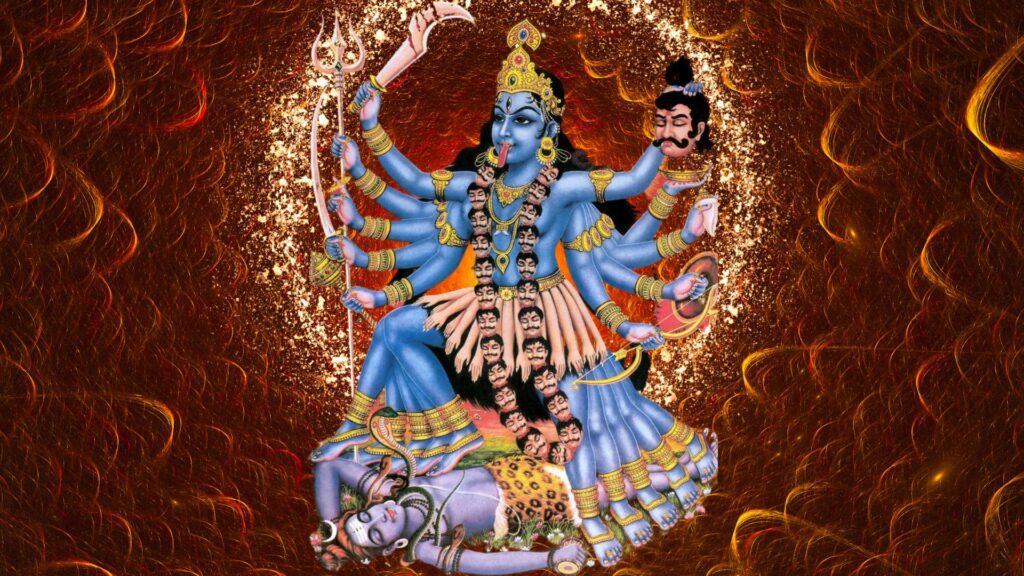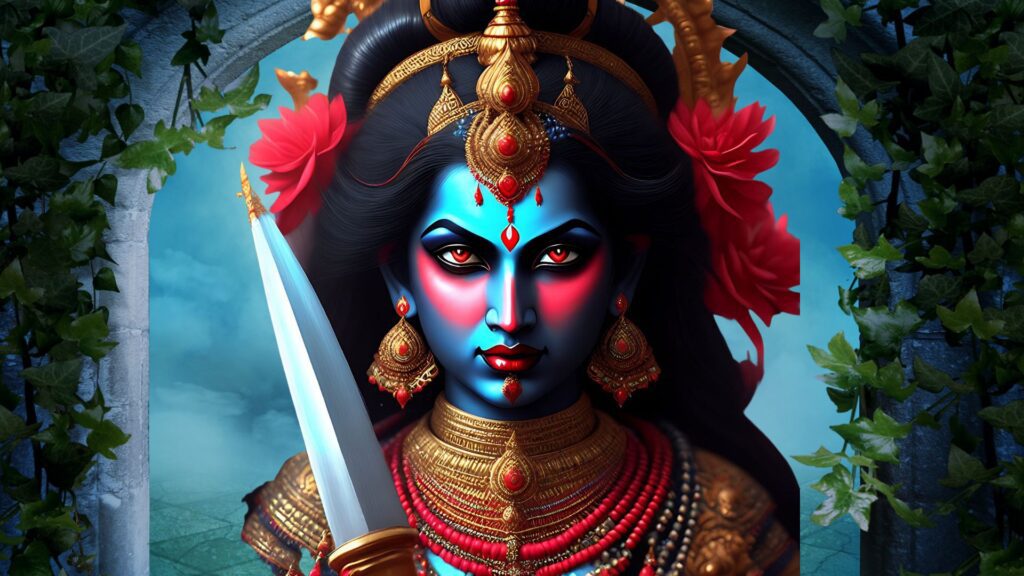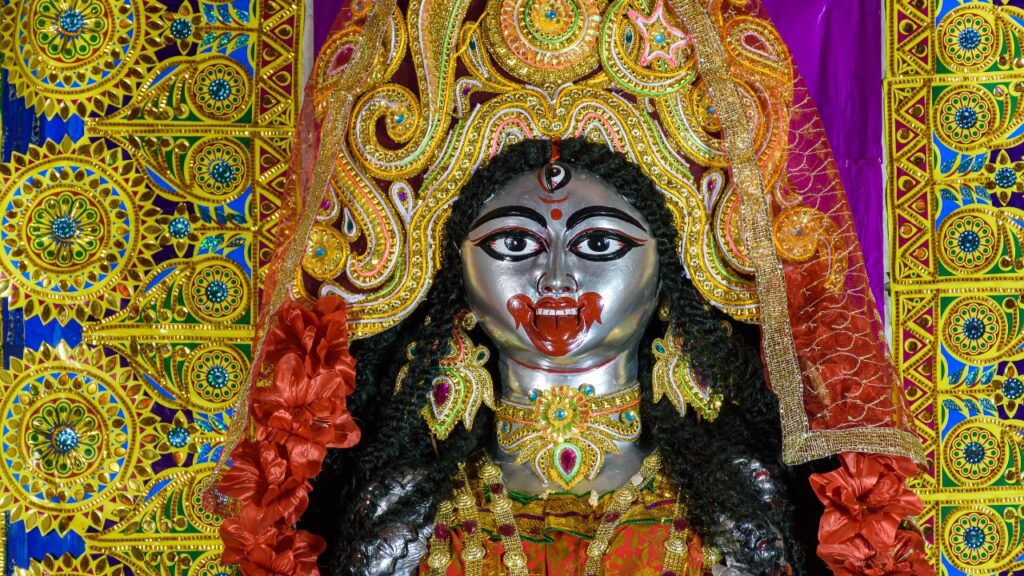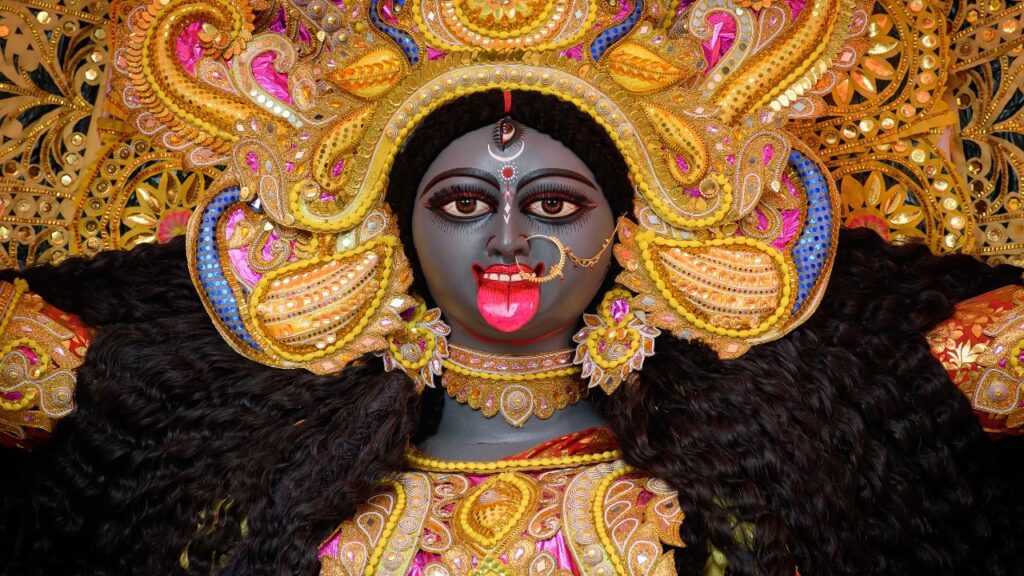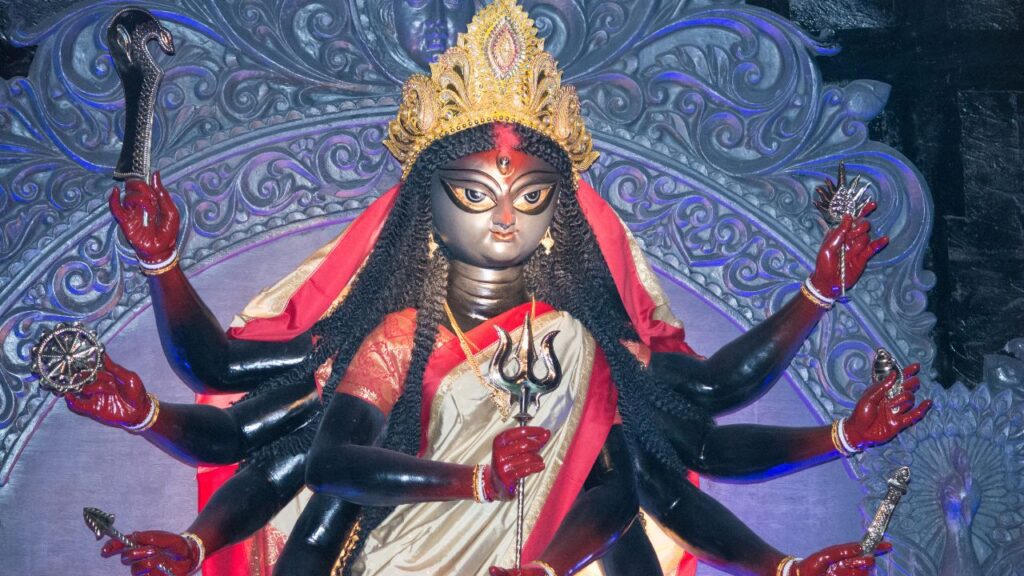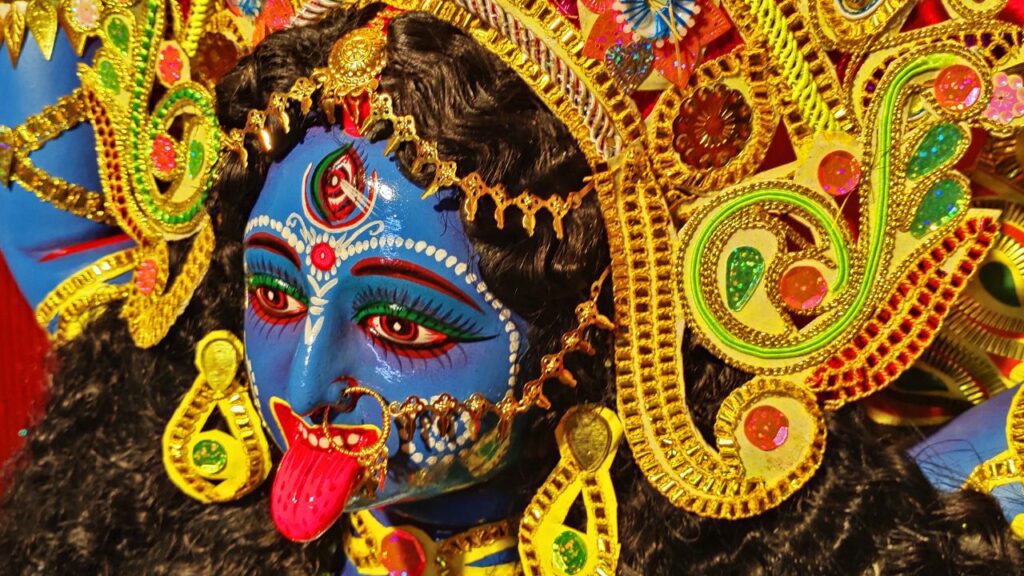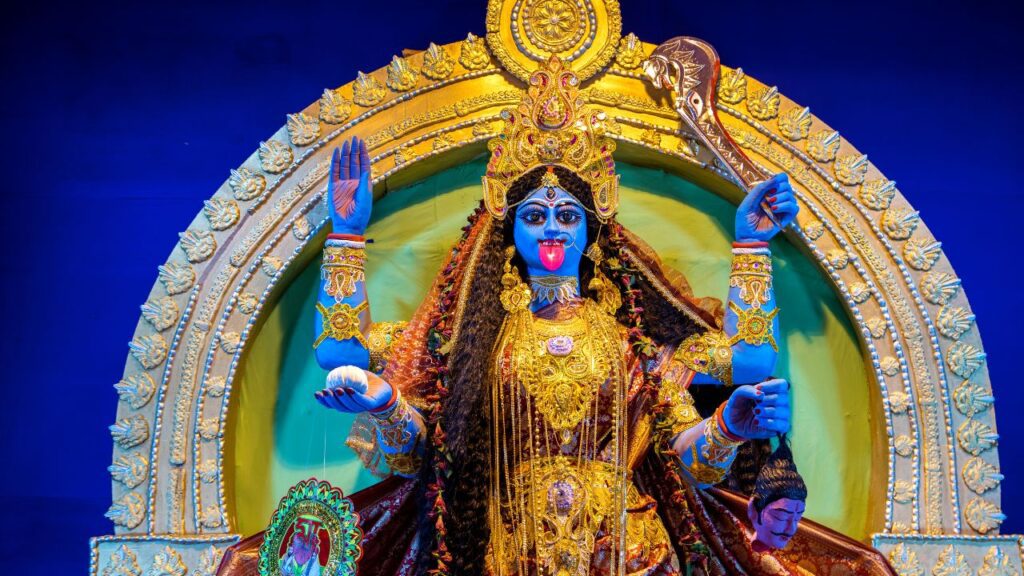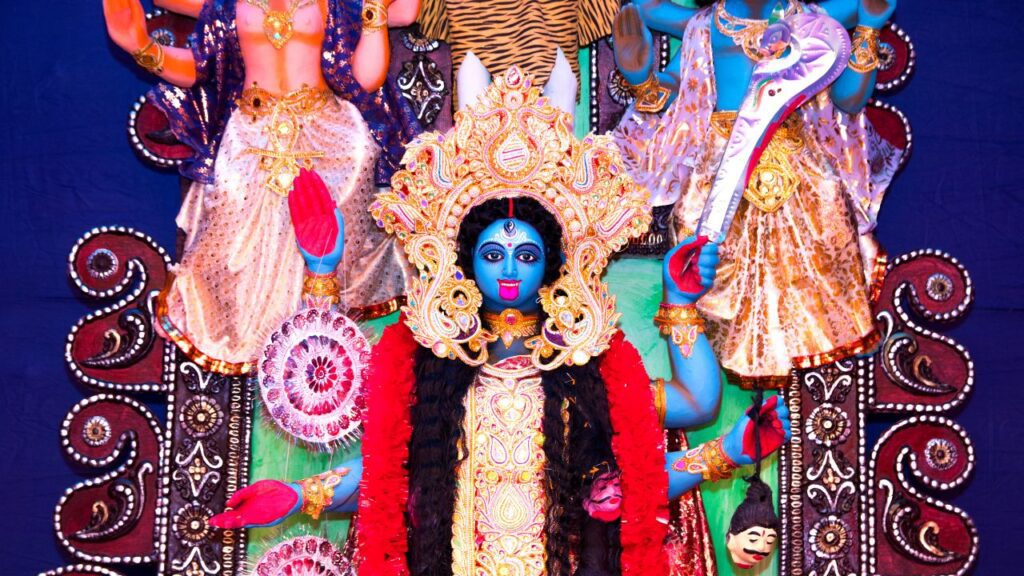Kali and Shiva: Relationship and Stories
Introduction
Two of the most interesting and mysterious characters in the vast fabric of Hindu mythology are the Goddess Kali and the Lord Shiva. Though sometimes seen as separate entities, these gods are closely entwined to reflect the cyclical dynamic of creation, preservation, and destruction that underwrites the fundamental structure of the universe. Their relationship gives us a great awareness of the duality inherent in the divine, full of both great wisdom and great mystery.
Fierce and Fearsome Goddess Kali
Often seen with a dark, ferocious expression, Kali, the strong and magnificent goddess, is garlanded with severed demon heads and wielders a sword in one hand and a severed head in the other. Her frightening aspect is enhanced by her untamed, messy hair and tongue pointing in a sign of aggression. Underneath this terrifying façade, though, is a loving, caring mother figure who valiantly shields her followers from injury.
With her very name, “the one who is black” or “the one who is time,” Kali suggests her control over the cycles of life and death. She is the unrelenting killer of evil, the remover of challenges, the living example of the destructive and transforming powers of the universe. Her sharpness captures the eradication of egoism, avarice, and all that gets in the way of spiritual illumination.
The Mysterious and Spartan Lord Shiva
Often shown as the great ascetic, Shiva, the highest deity in the Hindu pantheon, has his body covered in ash and ornamented with a serpent coiled around his neck. He is the incarnation of the formless, the everlasting, and the transcendental—that very core of the divine. Shiva’s function as the “Destroyer” is one of essential and cyclical metamorphosis whereby the old must make room for the new, not of wanton devastation.
Shiva’s meditative posture, intense reflection, and capacity to stay calm in the face of the most catastrophic catastrophes define his control over the temporal and the eternal. He is the mute, all-pervading force that underpins the very fabric of the universe, the quiet observer of the dance of creation and dissolution.
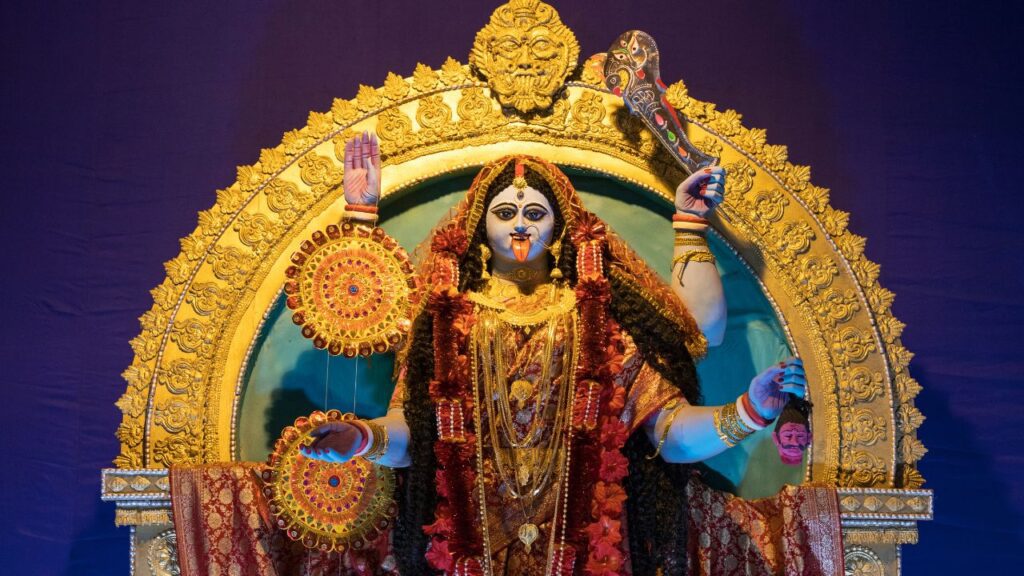
Kali and Shiva’s Cosmic Union
Reflecting the complex interaction between the dynamic and the stationary, the feminine and the masculine, the destructive and the creative, Kali and Shiva have a deep and mystical relationship. Often depicted as the “half-feminine Goddess,” this heavenly union sees Shiva and Kali combine into a single, androgynous deity.
Shiva seems on the right side and Kali on the left in this symbolic depiction, therefore indicating the inescapable link between the masculine and feminine cosmic energies. Their marriage is further shown in the cosmic dance of “Tandava,” when Kali’s violent dance of devastation is stopped only by Shiva, therefore showing the dynamic interaction of creation and destruction.
Lessons on Mastery and Balance
For those trying to grasp the more profound secrets of the universe, the tales of Kali and Shiva offer great insights. They educate us about the cyclical character of existence, in which the old must make room for the new and inexorably intertwined destruction and rebirth are. They exhort us to accept the creative as well as the destructive sides of life, to strike harmony and balance against the always shifting waves of the earth.
Furthermore, the way Kali and Shiva interact emphasizes the need of control over the self and the surroundings. As the tantric traditions describe, the capacity to “kill the Divine and bring him back,” marks the ultimate control over the very fabric of life and death. It is evidence of the theory that real spiritual illumination results from one’s capacity to become the master of their own destiny, to go beyond the limits of the temporal and the eternal.
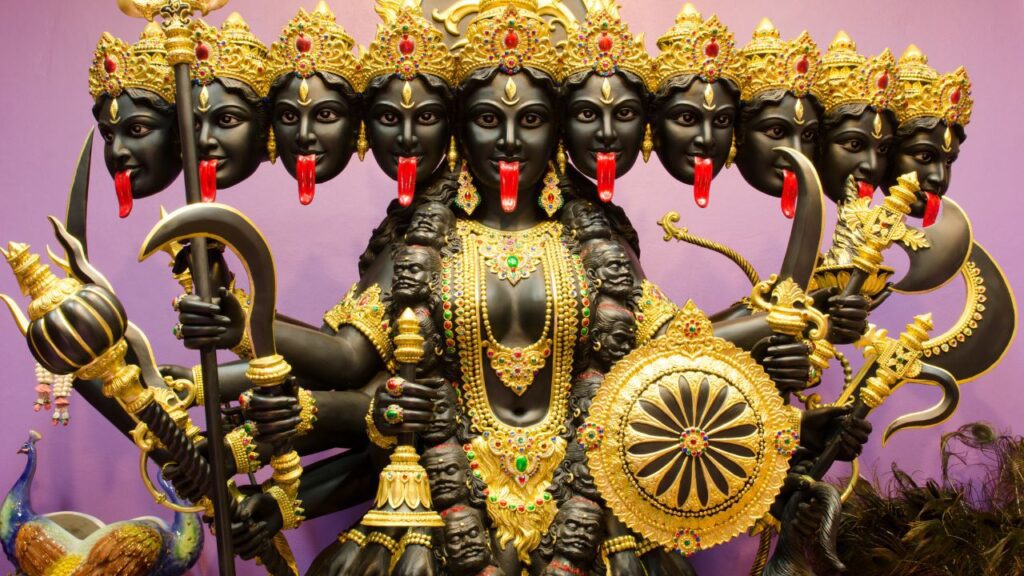
Duality of Kali and Shiva
The duality inherent in the connection between Kali and Shiva reflects the basic dualism guiding the very nature of life. While Shiva, the silent and austere, reflects the stationary, eternal, and transcendental parts of the divine, Kali, the dynamic and destructive power, reflects the active, temporal, and always changing aspects.
Still, these two apparently antagonistic energies are in a condition of perfect harmony and balance rather than confrontation. Each vital for the other to exist, they are the yin and yang of the cosmic dance, the two sides of the same coin. The actual nature of the divine is revealed in the junction of these two elements—a synthesis of the aggressive and the passive, the destructive and the creative.
Kal’s wrath and Shiva’s intervention
The account of Kali’s uncontrollable wrath is among the most gripping ones that shows the dynamic interaction between Kali and Shiva. Kali’s fury was released and she started an unrelenting attack of destruction when several demons started to rule the planet. Her rage knew no limits; she kept killing everything in her path even after the required action had been done.
Observing the destruction, the devas—celestial entities—went to Shiva, the only one able to control Kali’s wild energies. Shiva approached Kali simply being present, his usual tranquility and wisdom guiding him instead of aggression. But Kali’s intensity was so strong it brought Shiva down too. Kali only slowed down and gave Shiva life again when she understood what she had done—standing over his corpse.
This striking story emphasizes the need of knowing and controlling the interaction between creation and destruction as well as the fine equilibrium between the male and feminine cosmic energies. It implies that real spiritual mastery is the capacity of one to face and control the most basic and harmful parts of their own nature without giving in to them.

Kali Standing’s Symbolism on Shiva
A complex and multifarious emblem that captures the deeper lessons of Hindu philosophy, Kali’s famous image of standing on the chest of Shiva is One level, it shows Kali’s complete control over the entire process of life and death, her capacity to “kill the Divine and bring him back.”
This symbology addresses the concept of the ultimate spiritual mastery, in which the practitioner has such total control over the system of existence that they can destroy and then reassemble. It implies a degree of knowledge and control over the basic forces of the cosmos that surpasses the bounds of the time and the eternity.
On another level, the picture might be seen as Kali’s capacity to bring the silent, motionless side of the divine life. This is the dynamic interaction between the feminine and male energies, in which the active and passive, the destructive and the creative, unite in a harmonic dance of cosmic rebirth.
Tantra and Masters of Life and Death
Using the Kali-Shiva interaction as a basis for activities and ceremonies meant to reach the highest degrees of spiritual mastery, the tantric traditions of Hinduism have long investigated the deeper consequences of the relationship. Speaking of the practitioner’s mastery over the very processes of life and death, these customs suggest the power to “decapitate oneself” and “fix the head back.”
From the tantric perspective, this degree of mastery is not only a requirement to show but also a required stage toward actual spiritual enlightenment. One can only really transcend the bounds of the temporal and reach the ultimate state of consciousness by completely comprehending and accepting the cyclical character of life, the interaction between creation and destruction.
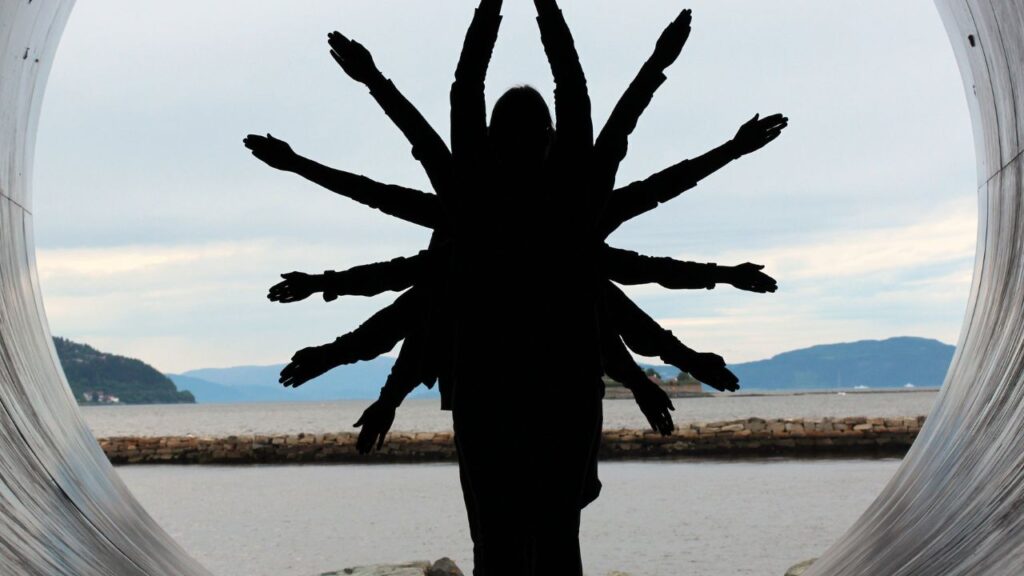
Value of Understanding and Balance
With their great insights on the essence of life, the tales of Kali and Shiva act as a potent reminder of the need of harmony and knowledge in our spiritual development. They inspire us to welcome the creative as well as the destructive sides of life, to view destruction as a necessary prelude to rebirth, and to summon the bravery to meet the obstacles that inevitably cross the road of self-discovery.
Furthermore, the interaction of Kali and Shiva highlights the need of harmony and connection in our search of the holy. We can only really access the wisdom and the bravery these gods stand for by realizing the natural unity underneath the apparent dualism of life.
Creation and Destruction’s Cosmic Dance
The cosmic dance of Kali and Shiva, sometimes known as the “Tandava,” is a potent allegory for the ceaseless cycle of creation and destruction that underwrites the fundamental structure of the cosmos. While Shiva’s cool presence helps to temper and balance Kali’s energy, so ensuring that the cycle stays in harmony, her wild, frenzied motions in this dance reflect the relentless powers of destruction and transformation.
This dance is evidence of the fact that only by accepting the creative as well as the destructive sides of life can one experience actual spiritual development and illumination. If we are to really develop on our spiritual path, we have to be ready to let go of the old and open space for the new.
Modern World Kali and Shiva
The lessons of Kali and Shiva are quite relevant and important in the present society. The wisdom these gods represent can be a lighthouse as we negotiate the often shifting terrain of our life, encouraging us to discover the bravery and fortitude needed to face obstacles.
The teachings of Kali and Shiva remind us of the need of balance, understanding, and the readiness to embrace both the destructive and the creative forces that mold our planet, whether it is the personal challenges we face in our daily life or the more major society and global issues we must negotiate. Developing this viewpoint will help us to discover the wisdom and strength to gracefully and deliberately negotiate the complexity of the current era.
Conclusion: The Continuum Legacy of Kali and Shiva
A monument to the ageless wisdom and insight Kali and Shiva provide, their great and ongoing influence in Hindu mythology and spiritual practice is evidence of Their relationship reminds us of the cyclical character of life and the need of balance and understanding in our spiritual path. It also provides a potent metaphor for the very essence of existence, with its complex interaction of destruction and rebirth.
The tales and symbols of Kali and Shiva will surely enthrall and inspire us as we keep exploring and deciphering the secrets of the universe, guiding us toward a greater knowledge of the divine and the basic forces influencing our reality. By means of their teachings, we can discover the confidence and knowledge to face the difficulties of our time and to welcome the transforming potential of destruction and rejuvenation central to the cosmic dance.
#kali #shiv #shiva #kaliandshiva

